A total of 43 trades have been completed by NBA teams since the 2018/19 season ended, including three deals involving three teams and one that included four teams. No club has been more active on the trade market during that time than the Hawks, who completed eight deals. However, the Warriors and Grizzlies have been hot on their heels, with seven trades apiece.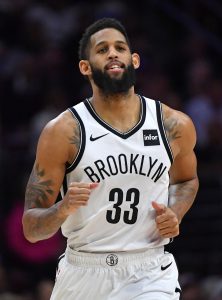
[RELATED: 2019 NBA Offseason Trades]
The Hawks were active early and often in the offseason. They were involved in the first trade agreement of June when they agreed to acquire Allen Crabbe from Brooklyn on June 6, then were part of the league’s first two officially-finalized pre-draft deals when they sent one second-round pick to the Warriors and another to the Heat.
Atlanta didn’t make any massive splashes on the trade market, but the trade up to No. 4 to land De’Andre Hunter‘s draft rights from New Orleans involved eight total players or picks, qualifying it as a modest blockbuster.
The Warriors made one massive move, acquiring D’Angelo Russell in a sign-and-trade deal with Brooklyn, but otherwise their summer swaps mostly focused on keeping team salary in check below the hard cap. Golden State moved veterans like Andre Iguodala and Damian Jones to cut costs, while acquiring second-round picks such as Alen Smailagic and Eric Paschall for their modest cap hits.
As for the Grizzlies, they’ve been one of the NBA’s most active teams after overhauling their front office in the spring. Their seven deals were all made with an eye toward the future, as they moved on from franchise point guard Mike Conley and loaded up on draft picks, netting three first-round selections and three more second-rounders over the course of the summer.
Here are a few other notable details related to this offseason’s trades so far:
Teams that have made the most trades:
- Atlanta Hawks: 8
- Golden State Warriors: 7
- Memphis Grizzlies: 7
- Philadelphia 76ers: 5
- Washington Wizards: 5
- Brooklyn Nets: 4
- Detroit Pistons: 4
- Miami Heat: 4
- New Orleans Pelicans: 4
- Oklahoma City Thunder: 4
- Phoenix Suns: 4
- Utah Jazz: 4
Teams that have made the fewest trades:
- Toronto Raptors: 0
- Charlotte Hornets: 1
- Chicago Bulls: 1
- Cleveland Cavaliers: 1
- Houston Rockets: 1
- New York Knicks: 1
- Orlando Magic: 1
- Sacramento Kings: 1
- San Antonio Spurs: 1
Players who have been traded multiple times:
- Kyle Korver: Jazz to Grizzlies to Suns (waived by Phoenix).
- Shabazz Napier: Nets to Warriors to Timberwolves.
- Treveon Graham: Nets to Warriors to Timberwolves.
- De’Andre Hunter (draft rights): Lakers to Pelicans to Hawks.
- Nickeil Alexander-Walker (draft rights): Nets to Hawks to Pelicans.
- Ty Jerome (draft rights): Sixers to Celtics to Suns.
- Kevin Porter Jr. (draft rights): Bucks to Pistons to Cavaliers.
- Jordan Bone (draft rights): Pelicans to Hawks to Sixers to Pistons.
2019 All-Stars or All-NBA players who have been traded:
- Anthony Davis: Pelicans to Lakers.
- Kevin Durant: Warriors to Nets.
- Paul George: Thunder to Clippers.
- Kemba Walker: Hornets to Celtics.
- Russell Westbrook: Thunder to Rockets.
2020 first-round picks that have been traded:
- Bucks‘ 2020 first-round pick to Celtics (via Suns; top-7 protected).
- Cavaliers‘ 2020 first-round pick to Pelicans (via Hawks; top-10 protected).
- Jazz‘s 2020 first-round pick to Grizzlies (1-7, 15-30 protection).
- Nuggets‘ 2020 first-round pick to Thunder (top-10 protected).
- Nets‘ 2020 first-round pick to Hawks (top-14 protected).
- Pacers‘ 2020 first-round pick to Bucks (top-14 protected).
- Sixers‘ 2020 first-round pick to Nets (top-14 protected).
- Warriors‘ 2020 first-round pick to Nets (top-20 protected).
Future first-round picks that have been traded:
- Heat‘s 2021 first-round pick to Thunder (via Clippers; unprotected).
- Lakers‘ 2021 first-round pick to Pelicans (9-30 protected).
- Clippers‘ 2022 first-round pick to Thunder (unprotected)
- Heat‘s 2023 first-round pick to Thunder (via Clippers; top-14 protected).
- Clippers‘ 2024 first-round pick to Thunder (unprotected).
- Lakers‘ 2024 first-round pick to Pelicans (unprotected).
- Rockets‘ 2024 first-round pick to Thunder (top-4 protected).
- Warriors‘ 2024 first-round pick to Grizzlies (top-4 protected).
- Clippers‘ 2026 first-round pick to Thunder (unprotected).
- Rockets‘ 2026 first-round pick to Thunder (top-4 protected).
Photo courtesy of USA Today Sports Images.
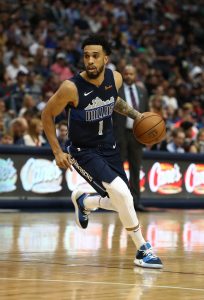
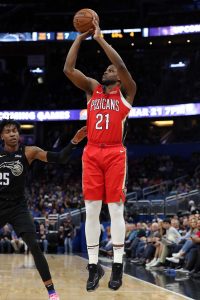
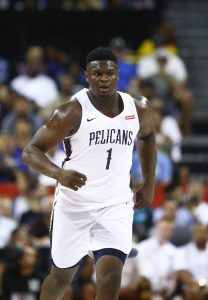
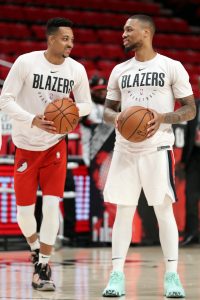
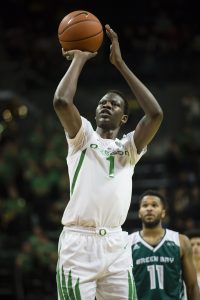
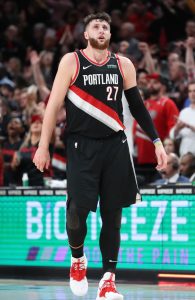 A broken leg ended Nurkic’s 2018/19 season in March, and he’s not expected to be healthy to start the 2019/20 season. Beyond that, the Trail Blazers haven’t offered up many details on Nurkic’s recovery timetable.
A broken leg ended Nurkic’s 2018/19 season in March, and he’s not expected to be healthy to start the 2019/20 season. Beyond that, the Trail Blazers haven’t offered up many details on Nurkic’s recovery timetable.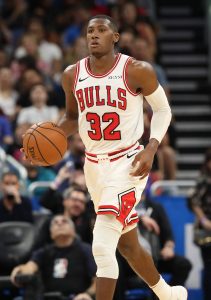 The Bulls didn’t waste any time this offseason addressing the point guard position, their biggest need heading into the summer. They used their lottery pick to draft
The Bulls didn’t waste any time this offseason addressing the point guard position, their biggest need heading into the summer. They used their lottery pick to draft